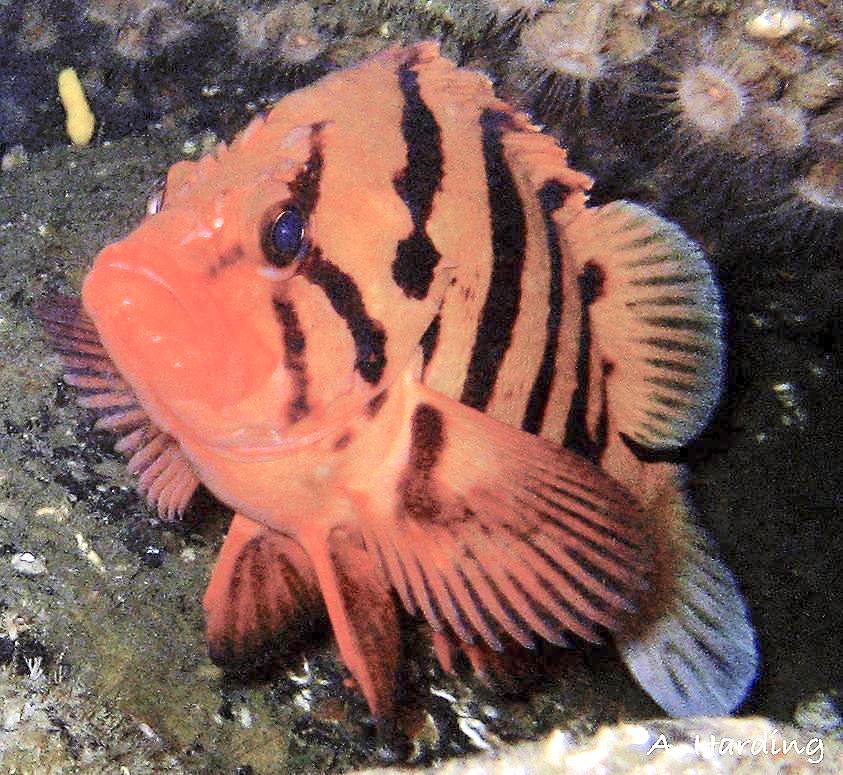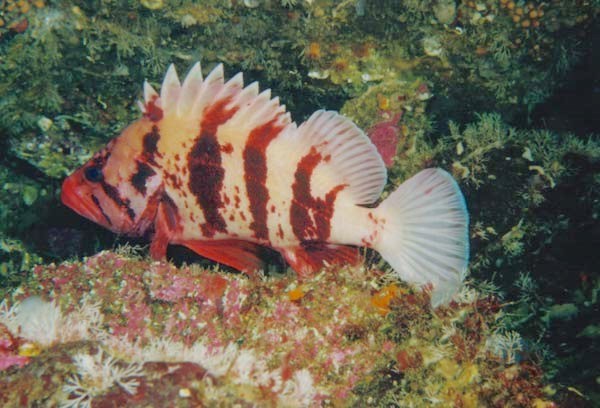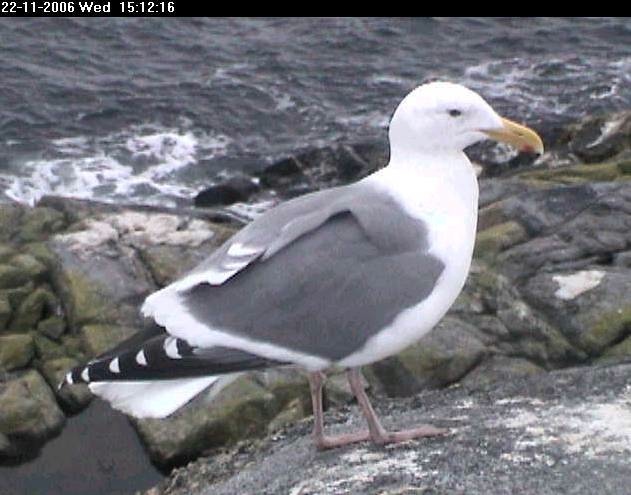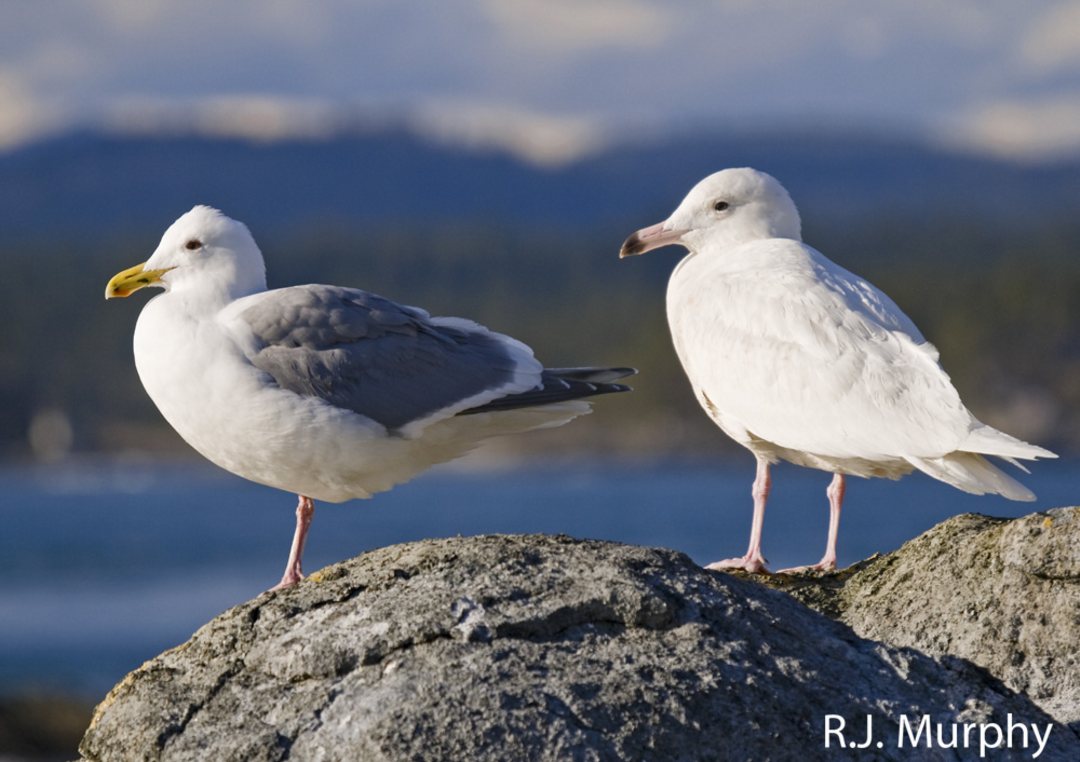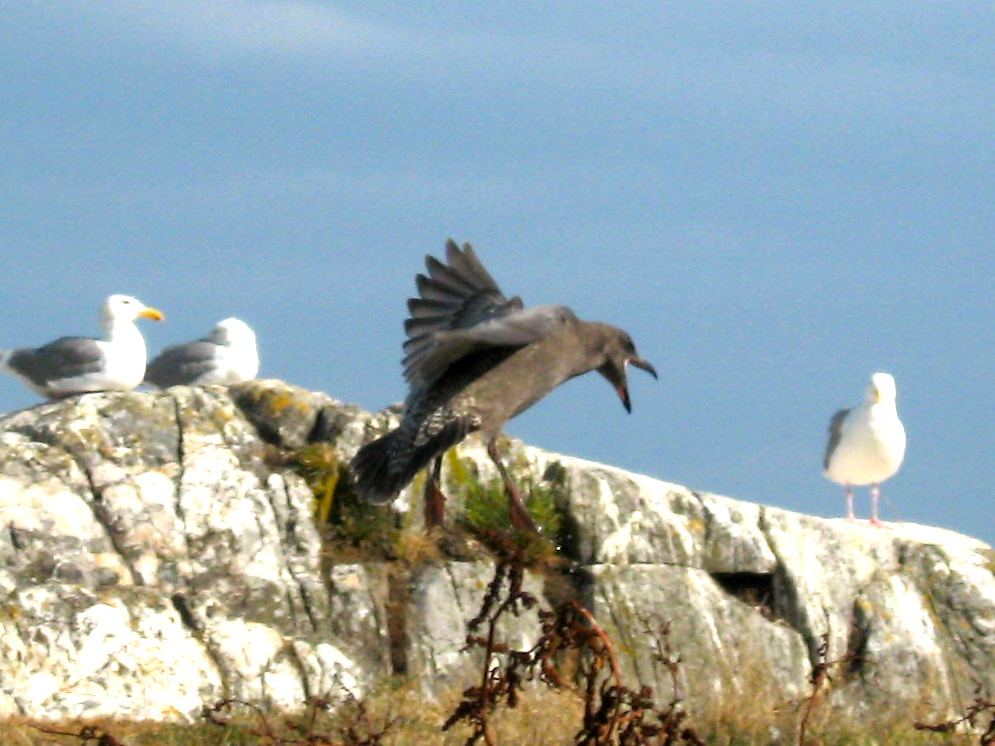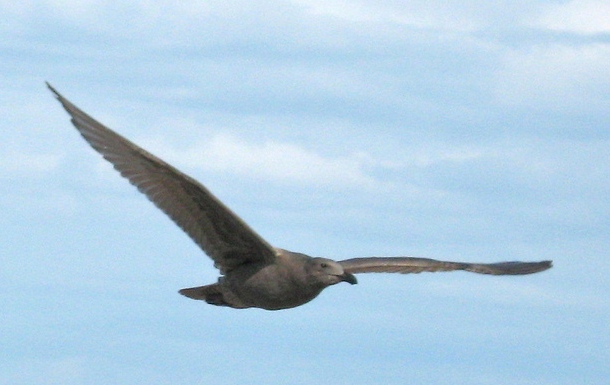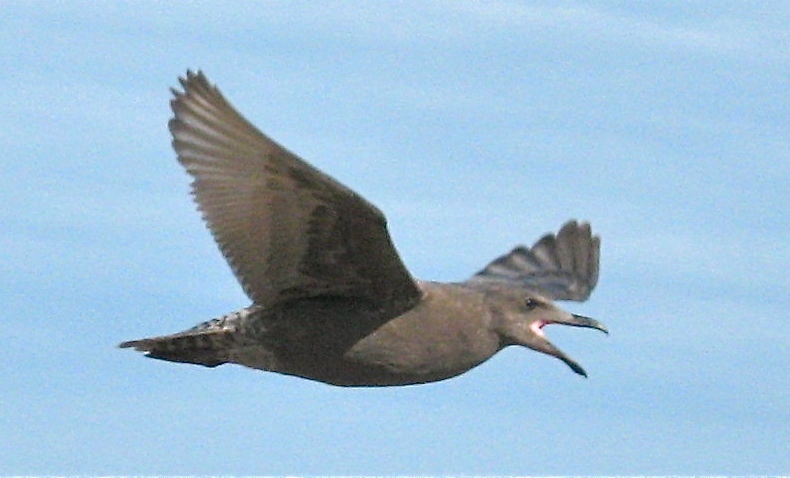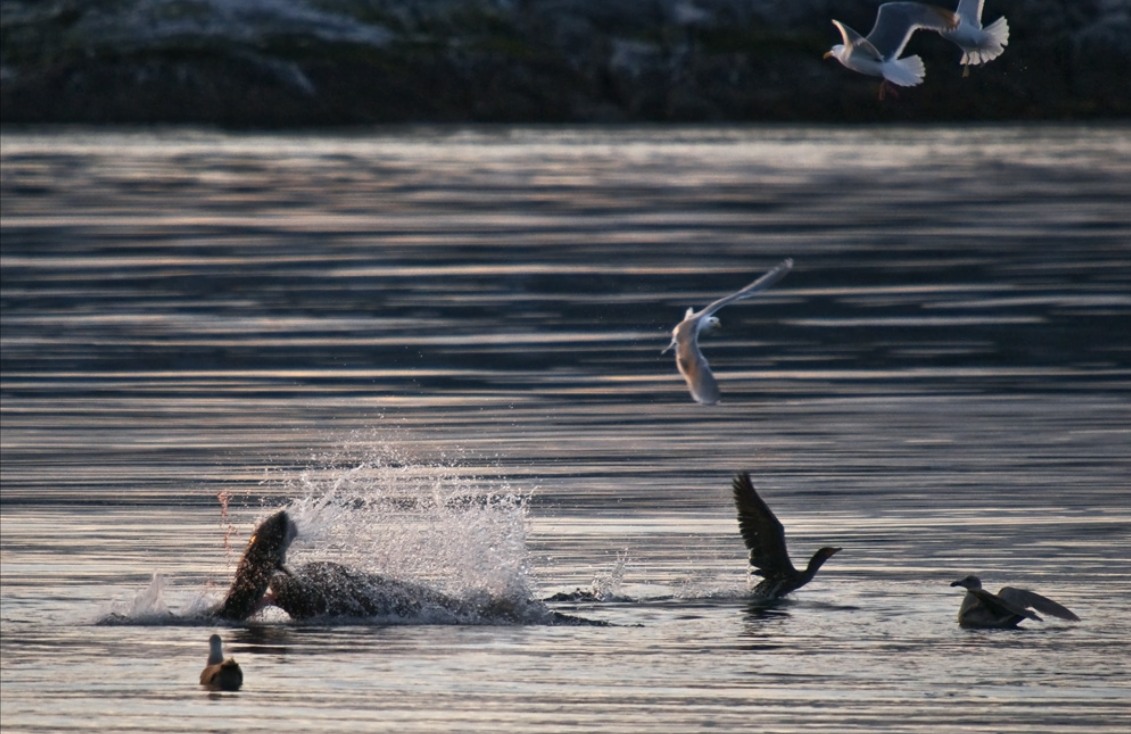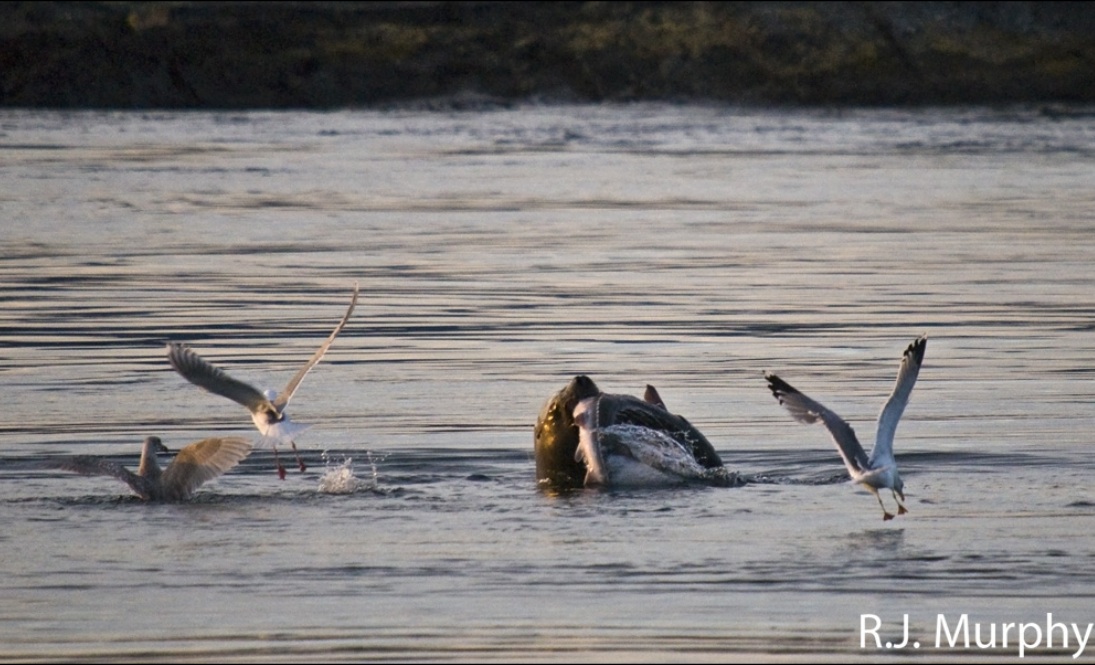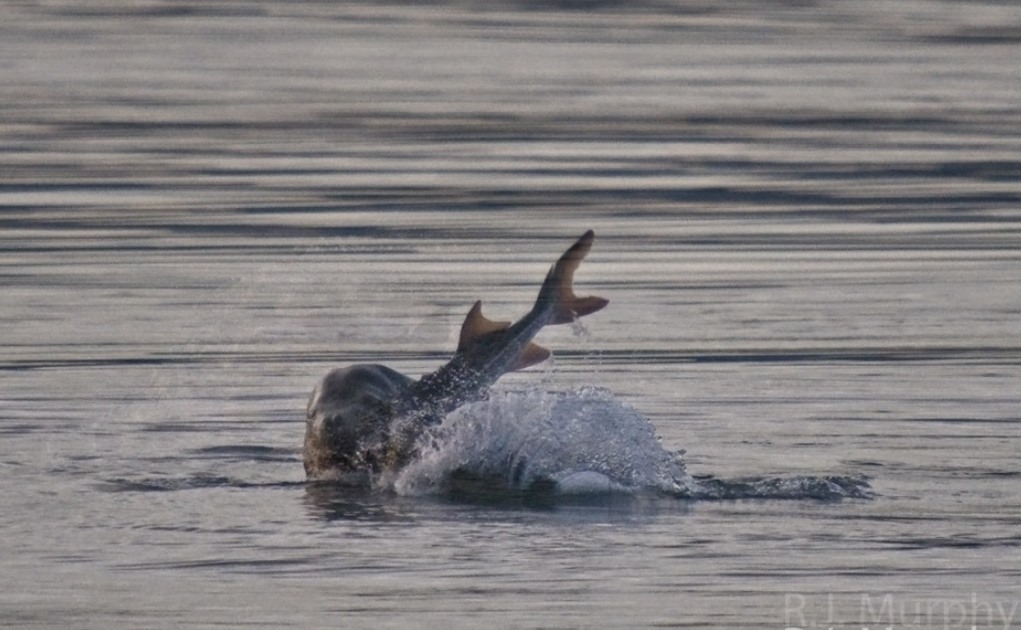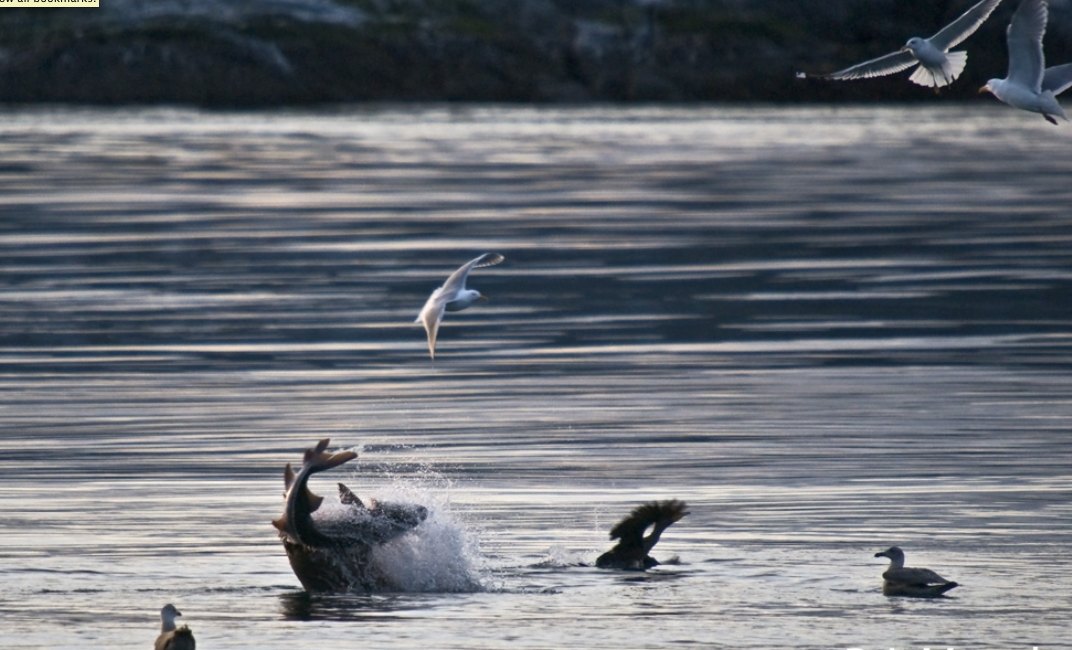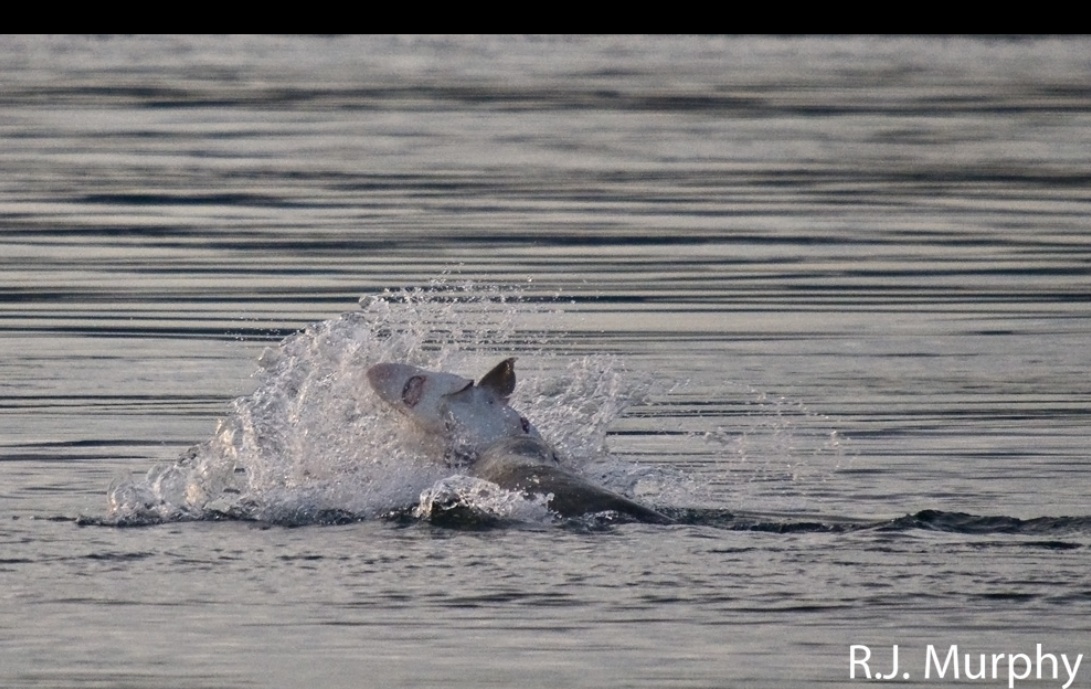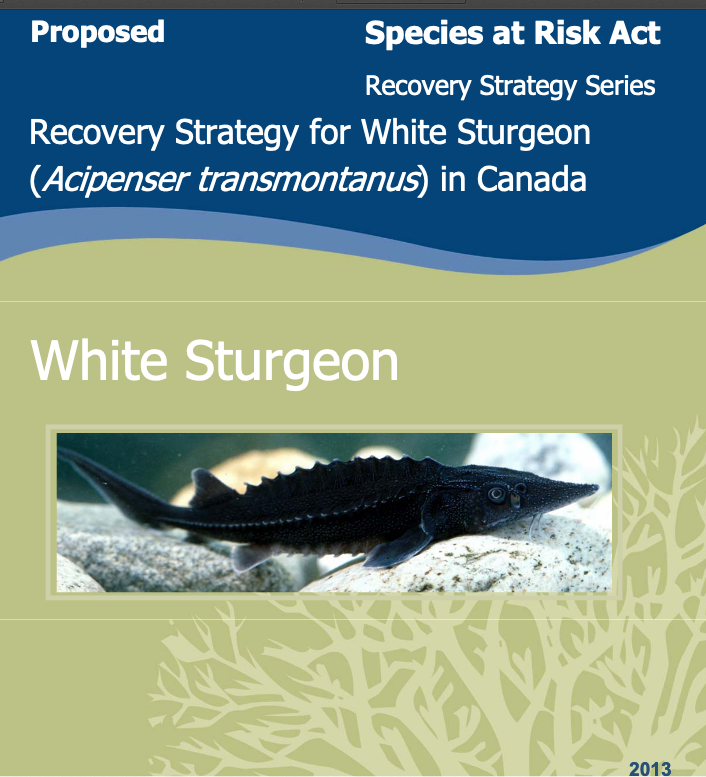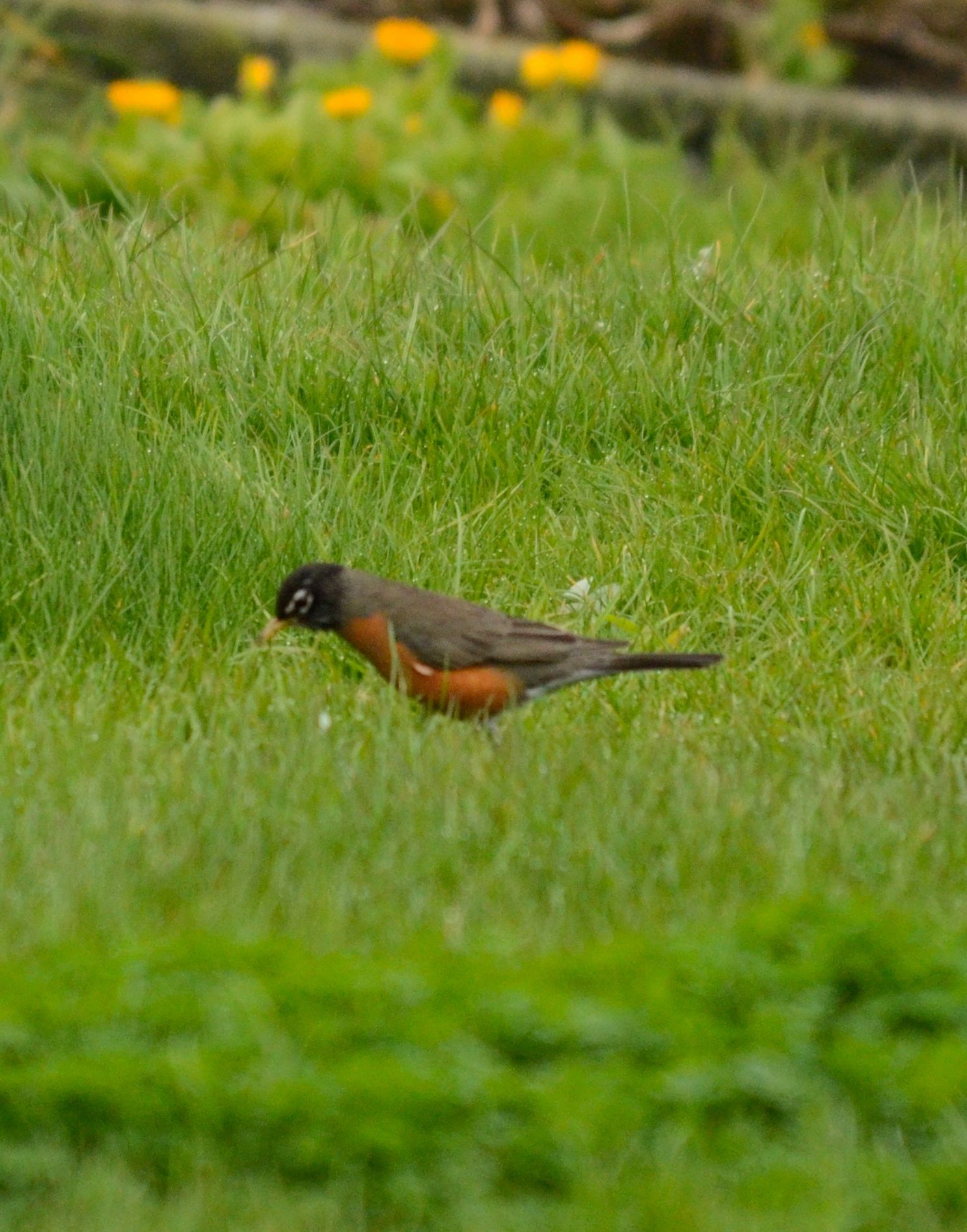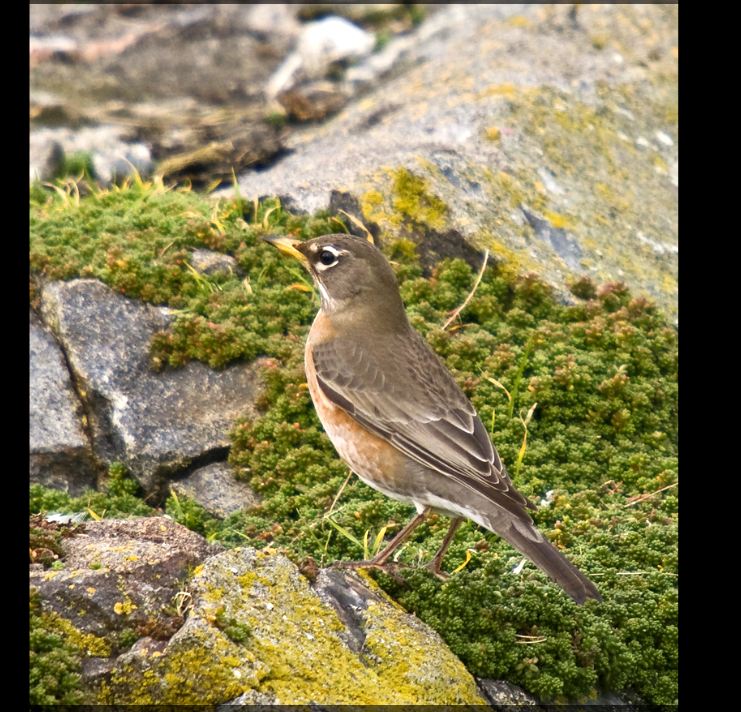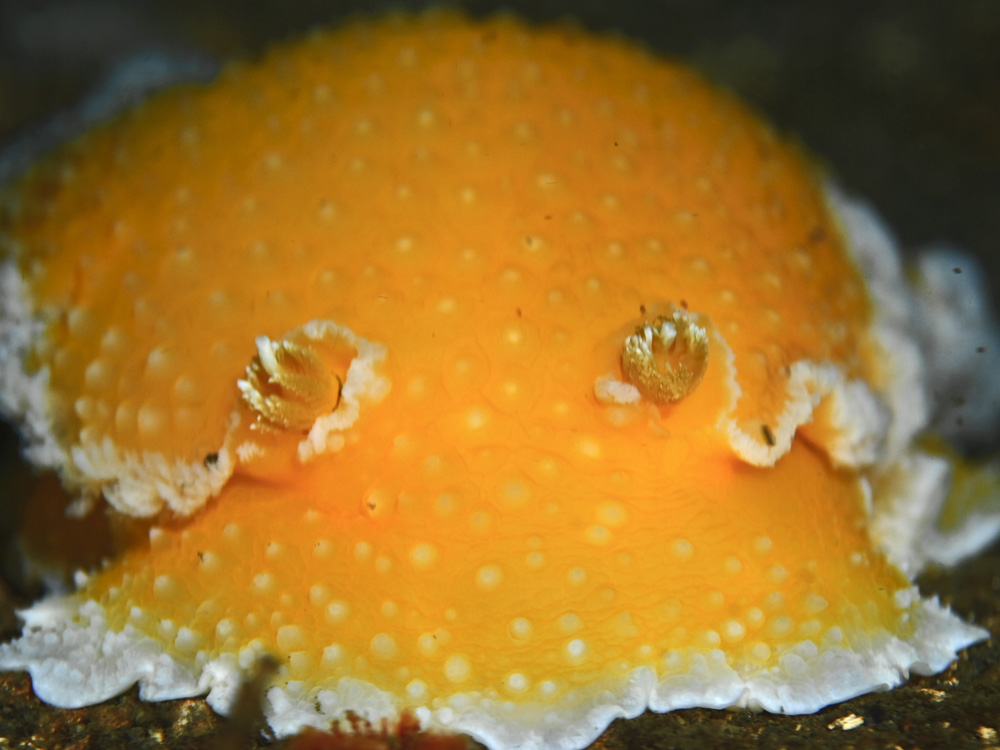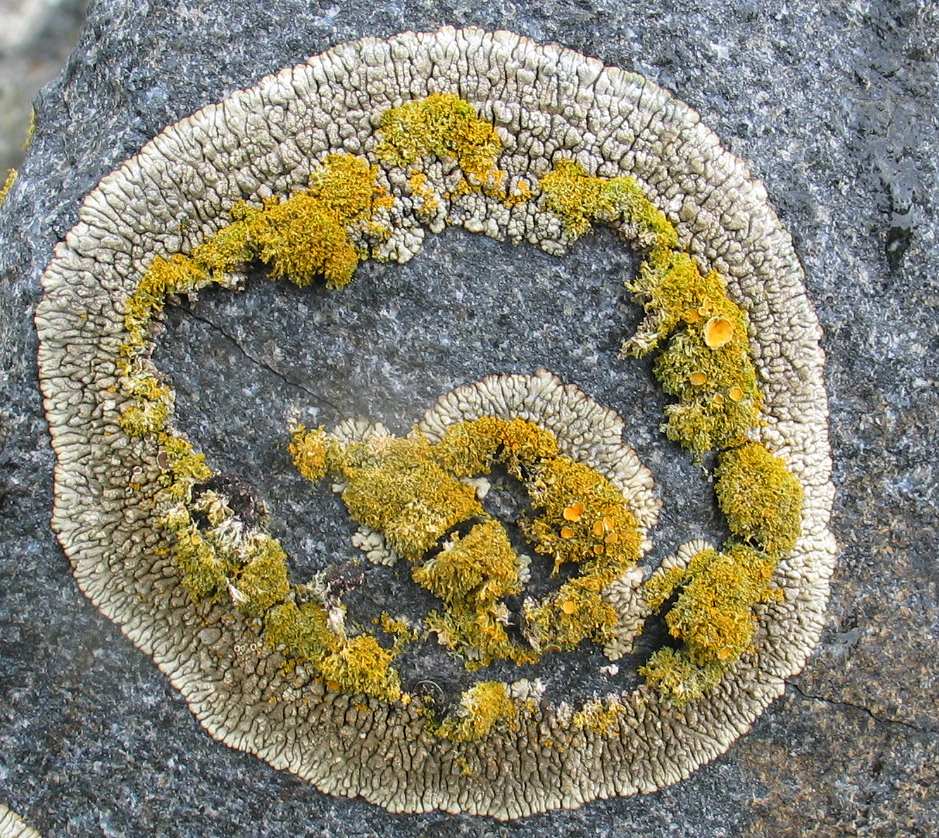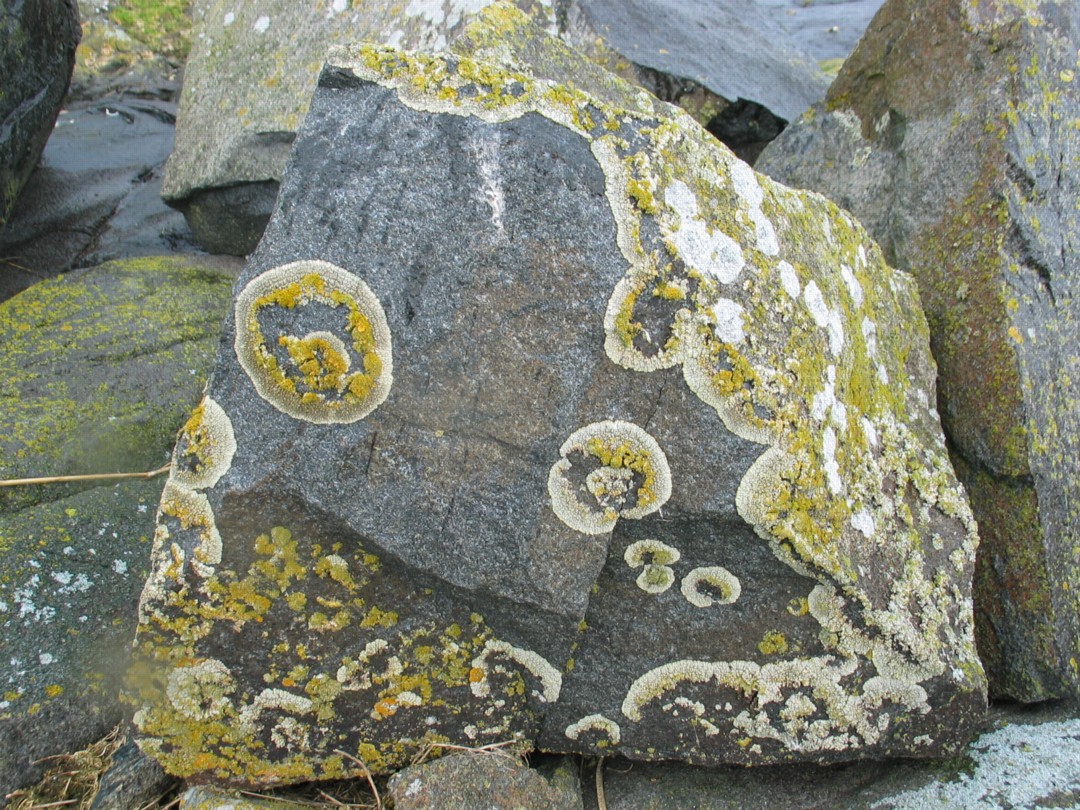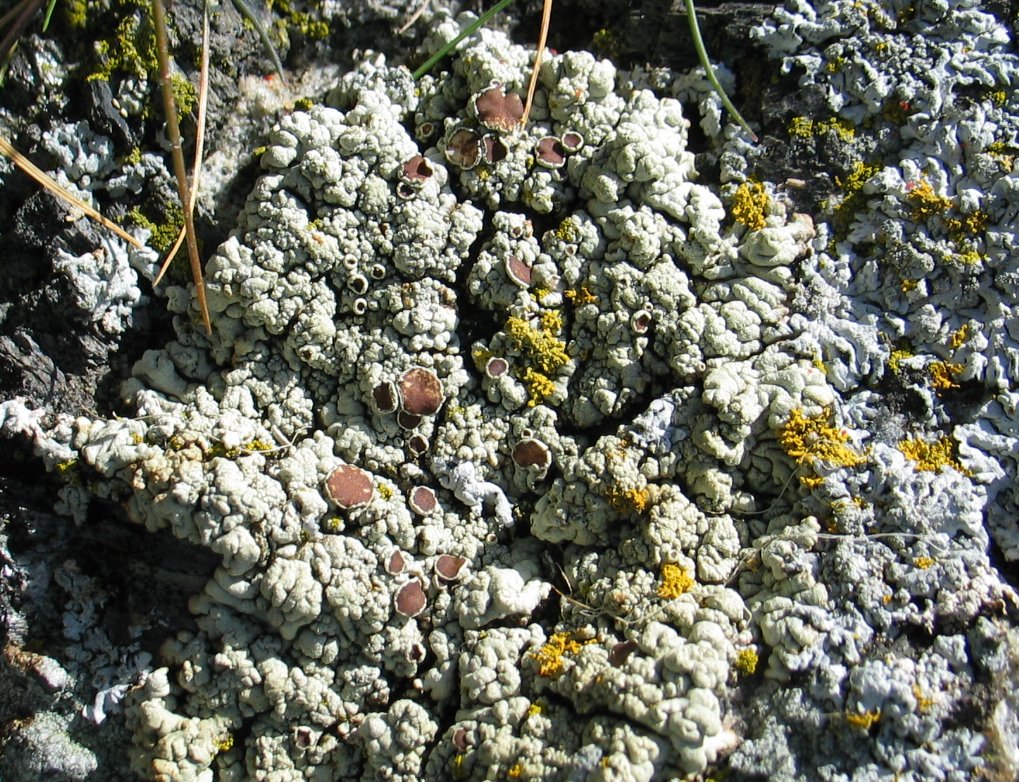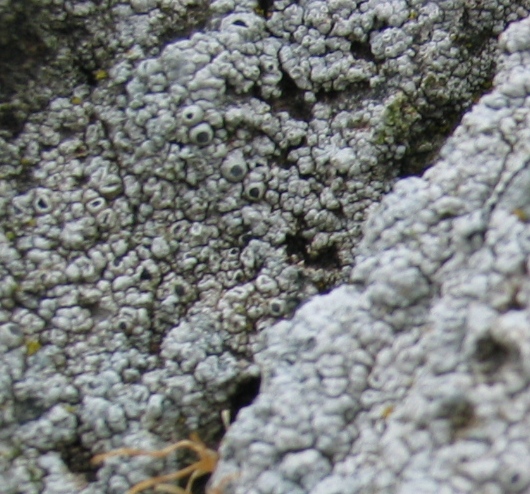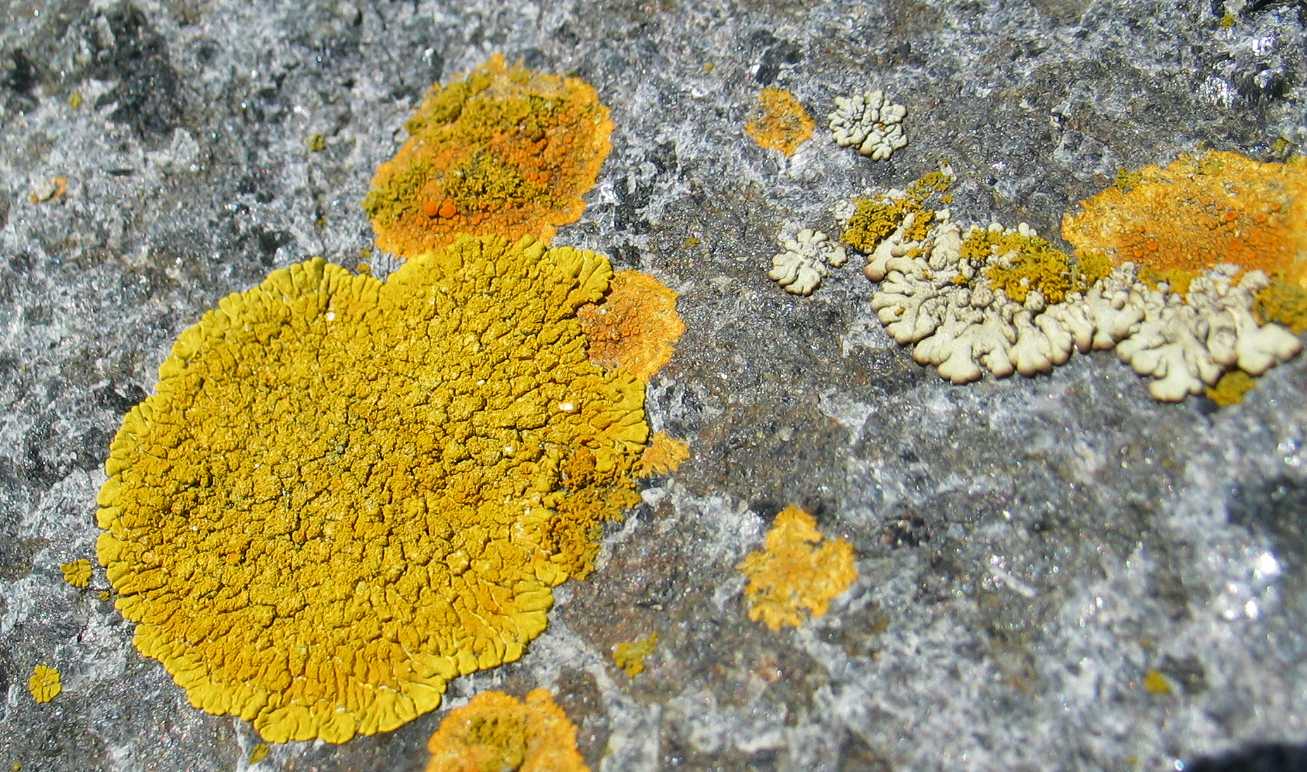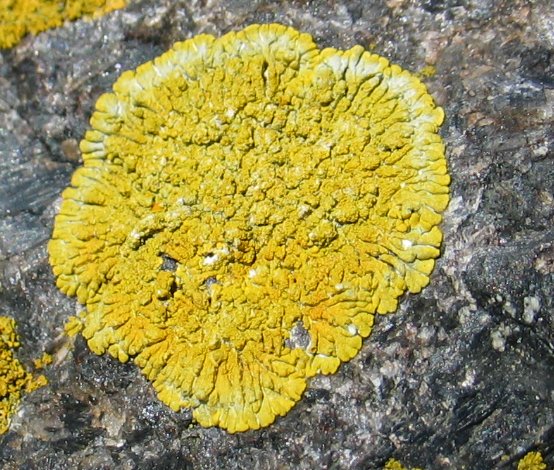- Tiger Rockfish by Adam Harding, summer, 2010
Characteristics:
Sebastes nigrocinctus, the tiger rockfish is striped like a tiger, feature shades of pink, grey or rose, with five black or red bars radiating backwards from the eyes. Bony ridges on the head may also distinguish them from other species. In younger individuals, tips of the ventral and anal fins are darkened. Tiger rockfish reach lengths of 35 cm by 17 years of age; their maximum size is reportedly 61 cm.
Distribution and Habitat:
Since the establishment of the Rock Fish Protection area around Race Rcoks after 2002, these fish are now protected.
They occur from shallow water to 305 m. They are generally found in waters less than 30 m in Puget Sound. Off Oregon, the species is usually found at depths of 64-305 m. In the northeastern Strait of Georgia, tiger rockfish are generally captured in 21-140 m of water.
Juveniles of the species are pelagic, while adults are semi-demersal to demersal. Tiger rockfish are commonly found in caves along undersea cliffs or on the sea floor, generally in high relief areas with strong currents. It was noted that tiger rockfish are often associated with “wall” habitat. Young have been noted resting among gooseneck barnacles near Triangle Island, British Columbia. Off southeast Alaska, habitat requirements for tiger rockfish are similar to those of Yellow Eye and China rockfishes. Juvenile tiger rockfish were observed around rocky reefs, as shallow as 9 m.
Trophic interactions:
Tiger rockfish are solitary, sometimes territorial, and are known to prey upon caridean shrimp, crabs (particularly rock crabs), amphipods and small fishes like herring and juvenile rockfish in the Gulf of Alaska . This species is a generalized feeder that depends on currents bringing food items near its home territory.
Classification based on:
Hart J.L., Pacific Fishes Of Canada, Bulletin 180, Ottawa 1973, page 433
Racerocks reference:
Further References:
1) Hart J.L., Pacific Fishes Of Canada, Bulletin 180, Ottawa 1973
2) http://www.homestead.com/FishStalker/Rockfish.html
Domain Eukarya
Kingdom Animalia
Phylum Chordata
Class Actinopterygii
Order Scorpaeniformes
Family Scorpaenidae
Genus Sebastes
Species nigrocinctus
COMMON NAME:Tiger Rockfish
|
Other Members of the Class Actinopterigii at Race Rocks.
|
and Image File |
 The Race Rocks taxonomy is a collaborative venture originally started with the Biology and Environmental Systems students of Lester Pearson College UWC. It now also has contributions added by Faculty, Staff, Volunteers and Observers on the remote control webcams. March 15 2009- The Race Rocks taxonomy is a collaborative venture originally started with the Biology and Environmental Systems students of Lester Pearson College UWC. It now also has contributions added by Faculty, Staff, Volunteers and Observers on the remote control webcams. March 15 2009- |

